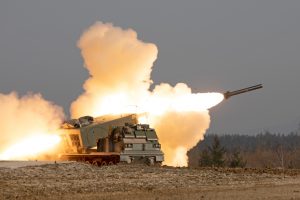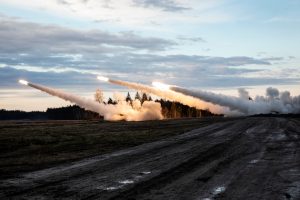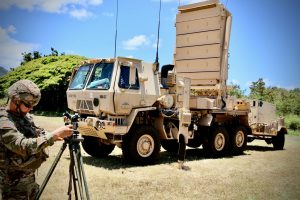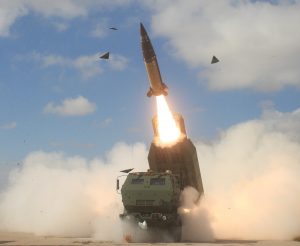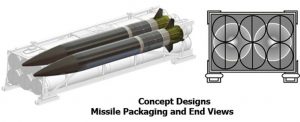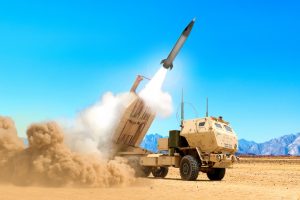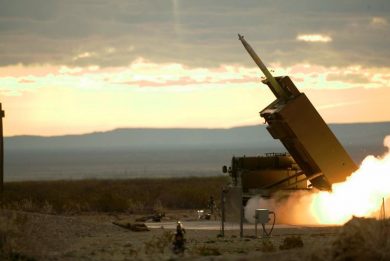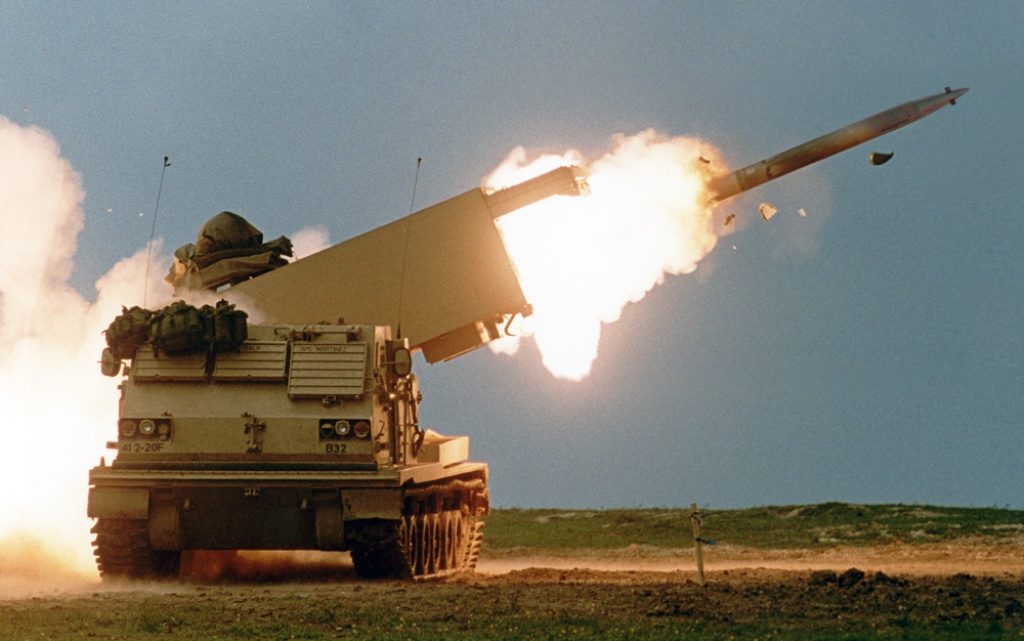
Future Artillery Conference: MLRS developments, a pivotal issue for European long range fires programmes
By Paolo Valpolini
With a US Army MLRS unit now fully operational on the Old Continent, the 41st Field Artillery Brigade based in Grafenwöhr has recently reactivated all its components, its effectors battalions being the 1/6th and 1/77th Field Artillery Regiment, and numerous European nations equipped with that same weapon system, among them Finland, France, Germany, Greece, Italy and the United Kingdom, as well as Turkey which is part of NATO, the evolution of the Cold War era Multiple Launch Rocket System is key to improving long range fires in several armies.
While the aforementioned nations field the M270 tracked launcher that hosts two pods of six rockets each, Poland and Romania are due to receive the M142 HIMARS (High Mobility Artillery Rocket System) wheeled launcher, which hosts a single pod, the US Army 41st FAB being also equipped with that weapon system allowing it to conduct HIRAIN (HImars RApid INfiltration) operations using tactical transport aircraft of the C-130 Hercules class. In 2021 41st FAB is carrying out “Fires Shock” a series of deployments for firing exercises both with its M270A1 and M142 systems, that covers numerous countries all around Europe, as well as in Turkey and Morocco, the Brigade being part of US Army Europe & Africa.
The MLRS was definitely one of the key subjects in many briefings at the Future Artillery Conference, organised by Defence IQ in late May, the pandemic situation forcing once again the organisers to shift to a virtual edition, as it already happened in 2020.
New munitions are being developed to increase range and improve effects, the tracked launchers that originally used the M26 rocket containing 644 M77 dual-purpose improved conventional munitions at a range of 32 km, the first US Army firing in Europe took place in September 1983 in Grafenwöhr, acquiring thus a completely different role, the same being true for the HIMARS.
Wayne Harrison, International Business Development Principal at Lockheed Martin, briefed the Future Artillery Conference audience on the future of the MLRS system, based on the threat evolution that the company analysed through the lenses of its customers eyes. “If we understand the threat, we can then understand capability gaps and can help and assist our customers,” he stated in his initial remarks. “In terms o range, looking at adversaries like Russia, China, North Korea and even Iran, we are quite frankly overmatched,” he said, underlining that since the end of the Cold War US and Western forces were engaged in low intensity conflicts and never dealt with the aforementioned near-peer competitors, a risk that is now increasing. The past scenarios also led to a heavy dependence on GPS technology for precision navigation and firing, something that might be denied by potential peer adversaries. Technology protection, cyber protection, the proliferation of low-cost UAVs, and even more importantly Anti-Access/Area Denial (A2/AD) systems, are all influencing future scenarios according to Wayne Harrison. “If we cannot reduce the integrated air and missile defence systems as well as the coastal batteries that our enemy has, our ships will not come in close to off-ramp our forces ashore, and our aircraft will absolutely not fly into the teeth of our enemy air defences, so as artillerymen we must be able to shape and influence that, and have the range, the lethality and the survivability to be able to strike and reduce enemy systems.”
The first development that Lockheed Martin is pursuing to fill those capability gaps is extending the range of its GMLRS (Guided Missile Rocket System), the in-service version being able to reach a target at 80 km distance, six GMLRS being fitted per pod. “We are going to nearly double the range of that system, bringing it to 150 km,” Harrison said, “most importantly maintaining the minimum range of this rocket, which is 15 km.” The original GMLRS featured small canard wings on the front cone, being thus a front controlled actuated rocket, the LM representative explains, while in the new rocket, the GMLRS-ER, for Extended Range, control surfaces have been moved at the back, making it a tail-driven rocket, which according to Mr. Harrison considerably reduces the drag while increasing manoeuvrability. “We also increased the rocket motor diameter, from 9 to 10-inch [228 to 254 mm], but the important thing is that we are still able to maintain six rockets in each pod,” he explained. In the GMLRS-ER Lockheed Martin engineers managed to free some room in the nose cone, that allows for future growths. “We can put different sensors in it,” Harrison said, “carrying out incremental upgrades in the future, we can put more data links, and we made a modular nose where we can insert various warheads that will be developed in the future.”
Operationally speaking the GMLRS-ER increases flexibility, different units being able to hit the same target, the same number of launchers being able to cover a wider space, or the same space being covered by a lesser number of launchers, reducing the logistic footprint, giving to planners and commanders more options than in the past. “More important, the longer range means that those units can be spread out more, and can mutually support each other in a more dispersed battlefield,” Wayne Harrison concludes. He however adds that longer range means also increasing target acquisition capabilities, especially as far as counter-battery fire is concerned, “and here we are working hard with our Q-53 team, which is constantly trying to increase the range.”
The AN/TPQ-53 Active Electronically Scanned Array (AESA) counter-battery radar will never be able to see at 150 km, however according to the LM representative, increased range coupled with the most appropriate deployment of the sensor and shooters allows to considerably increase the coverage. Not only, the Q-53 team is also improving its capabilities in other fields: “The UAS proliferation is a problem, and to be honest our integrated air and missile defence systems are not as good at detecting small and slow flying UAS, and tie them into a shooter to take it down. At Lockheed Martin we are doing a great work on the Q-53, to allow it to be able to see those UAS and feed the data to the effectors.” And looking how suicide UAS and loitering munitions were used in the recent Nagorno-Karabakh confrontation, this might be pretty useful.
The US Army will receive in 2023 the first Precision Strike Missile (PrSM); this new round will replace the ATACMS (Army Tactical Missile System) which longer range version reaches 300 km. The PrSM will not only considerably increase the range, but will also allow doubling the number of missiles per launcher as a standard pod for the M270 or M142 launcher will contain two missiles instead of the single ATACMS. In his presentation Wayne Harrison underlined how the 400+ km range is what the company is allowed to communicate, however he also pointed out how Brig. Gen. John Rafferty, Director Long Range Precision Fires Cross Functional Team, US Army, talked about 500+ km. The new range is due to the withdrawal of the United States from the Intermediate Nuclear Forces (INF) treaty in August 2019, the INF limiting the missiles range to 500 km. The new US Administration has not shown any intent to reverse the course and adopt a new treaty, limiting again the range of its surface-to-surface weapons.
“The most important thing is that the PrSM will have the same lethality as an ATACMS because of the advancement of our warhead technology,” Mr. Harrison underlines, adding how much having two missiles per pod will help commanders thanks to the reduced logistic footprint. Available 24/7 all weather the PrSM will allow shaping the battlefield at ranges that currently can only be targeted by air assets, which are not always available, especially considering A2/AD scenarios. Although the PrSM warhead is an aerial effect one, the new missile is cluster munition policy compliant, while it is obviously an insensitive munition, as required by most armies nowadays. Detailing the warhead, the LM representative explained that the area effect comes from a very dense tungsten ball bearings contained in the warhead, As in the GMLRS-ER, Lockheed Martin left some space in the nose cone to host other seekers or warheads, making the PrSM an open architecture system. This will allow a spiral evolution as, Mr. Harrison said, “the Army intends keeping the MLRS and the HIMARS as programmes of record until the late 2050s”. To this end Lockheed Martin is already considering adding a seeker head to provide the PrSM a capacity against moving targets; “We will have to work out the kill chain, we are considering command and control issues, but we have the technology to hit moving targets,” Harrison confirmed. As for re-targeting capabilities, this might also become a reality at a later stage.
Another customer request is to provide the PrSM with an anti-maritime role, and the company is busy in adding the appropriate technology and seeker to allow it to disable or kill a ship.
The Early Operational Capability is planned for 2023, while Initial Operational Capability should be reached two years later, followed by the missile mass production.
In his speech Brig. Gen Rafferty underlined that not only the PrSM, compared to the ATACMS, will have a much greater range and the same lethality, but cost will be comparable. As for the programme status, “Two weeks ago at White Sands missile range the PrSM was tested at over 400 km, with performances spot on from speed, apogee, angle of attack and lethality aspects,” he said, confirming the 2023 date for the Urgent Materiel Release delivery. Looking forward, the multimode sensor should follow a couple of years later, “but we will start testing it in a surrogate missile in the next 60 days,” BG Rafferty said, adding that following, this further improvement will be developed, such as a Very Extended Range version. It will remain compatible with current launchers and this will make it difficult for potential adversaries to understand which are the systems fitted with the VER version, which role will be to penetrate enemy A2/AD bubbles disintegrating them.
Wayne Harrison further elaborated on future warheads. “We are already working on alternative warheads, one being the buckshot warhead, which is an airburst device that would defeat light armour and unarmoured targets. We however understand that our customers also want to take out medium-heavy armoured vehicles, so we are advancing our technology with bigger tungsten steel balls that can penetrate them, also considering the force required to do so. We need to get back to something that can deal with those targets while remaining treaty compliant,” he said, limiting its briefing on those programmes as these are classified.
While developed based on US Army requirements, the GMLRS-ER and the PrSM are obviously offered at the MLRS/HIMARS community, these new rounds allowing many nations to considerably increase the reach of their artillery system, a key element in multi-domain operations, although some nations are orienting their MDO approach more towards non-kinetic rather than towards kinetic effects. The GMLRS-ER has already attracted considerable interest, an issue remains of course that of long range targeting, a must when deploying effectors with longer reach. How much the new capabilities provided to those launchers will bring to further nations joining the community remains to be seen. However, as confirmed by Mr. Harrison, studies were conducted to verify the compatibility of the HIMARS launcher on different truck chassis, Lockheed Martin being ready to consider such an option should a customer require it. Since the first launch in Europe 38 years ago, the MLRS and its wheeled counterpart are here for staying for at least four more decades.
Photos courtesy DVIDS, Lockheed Martin, US Army


